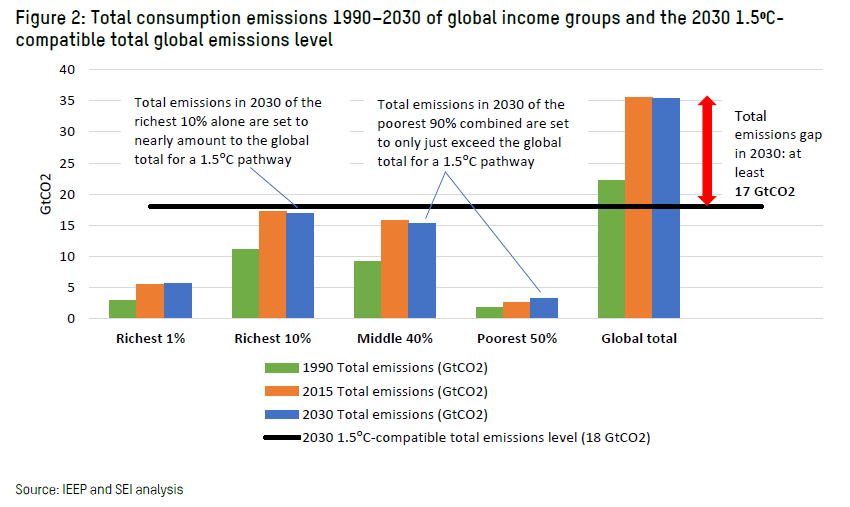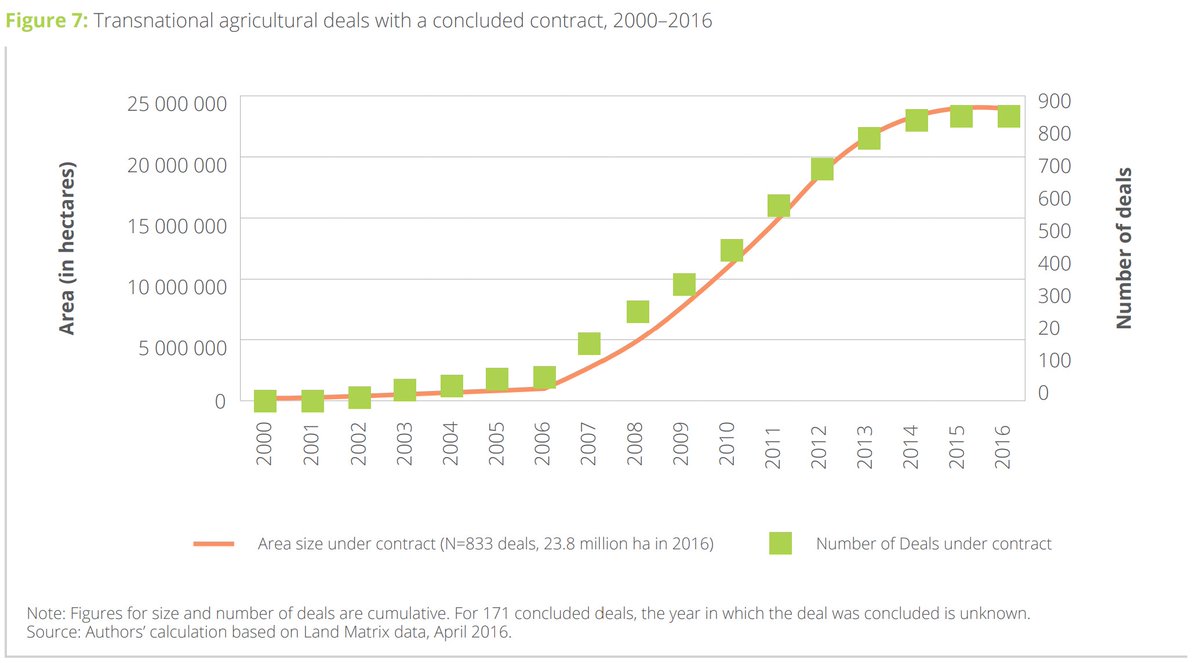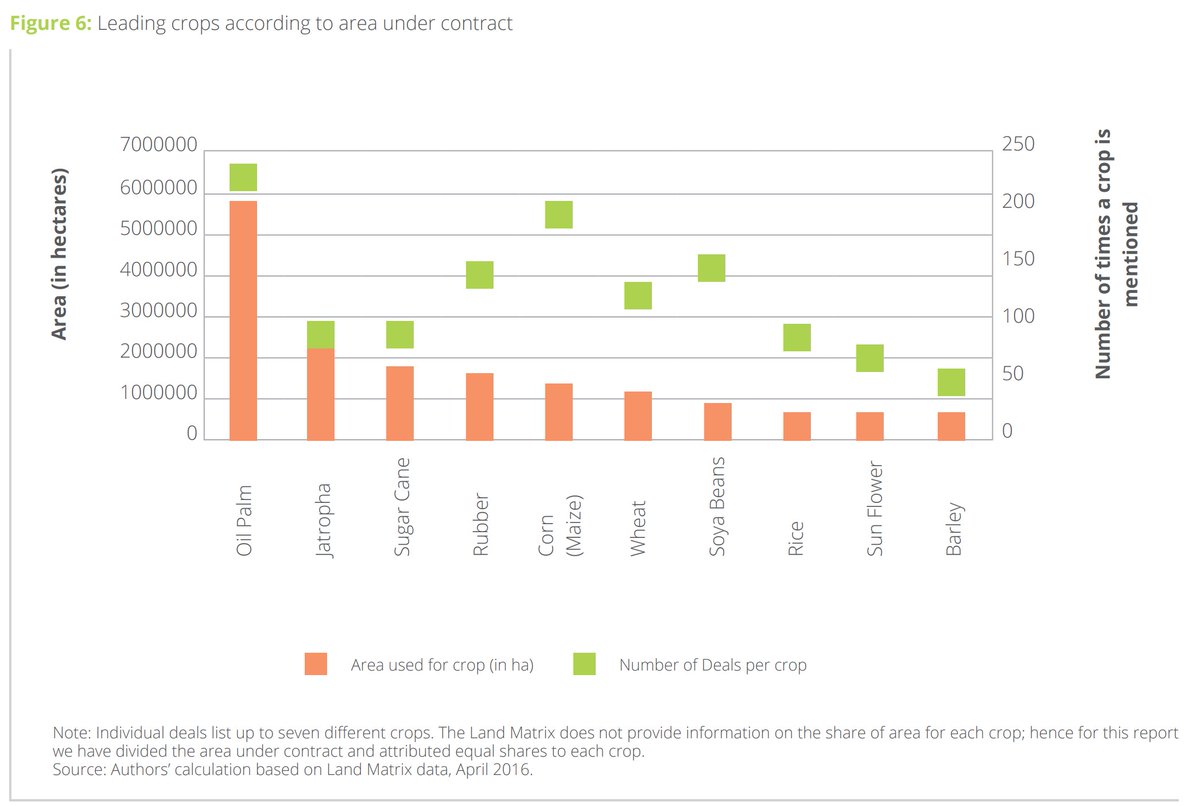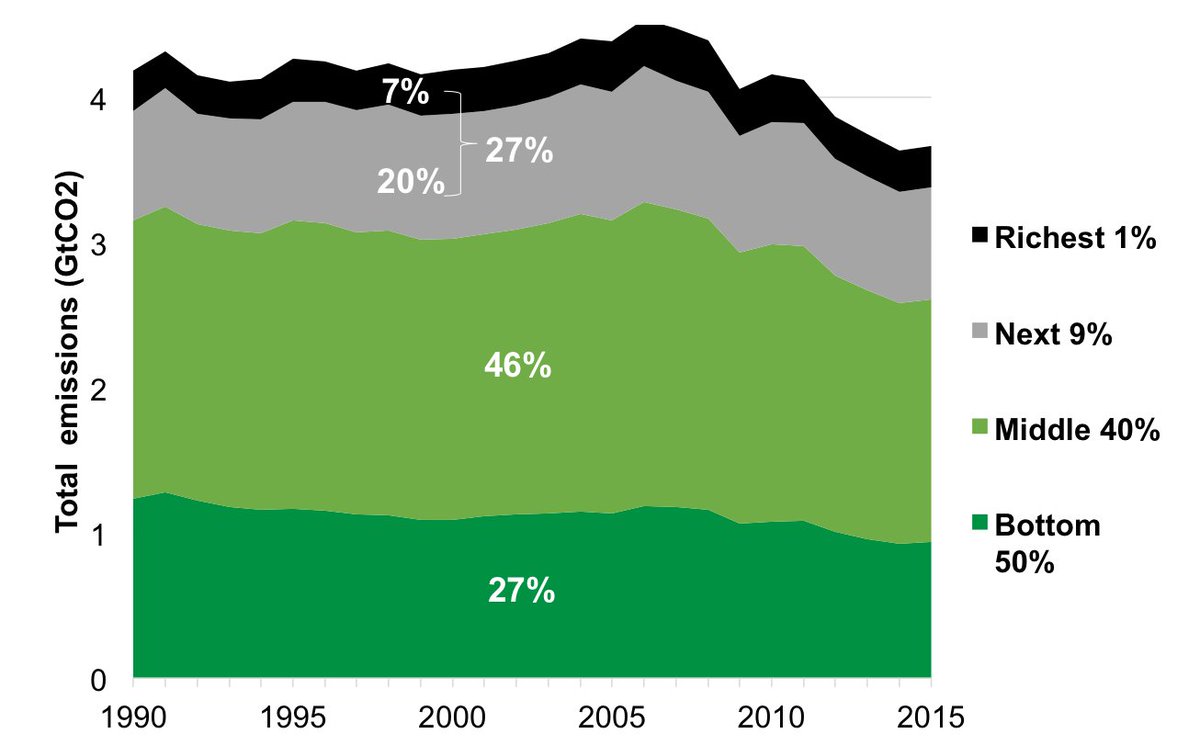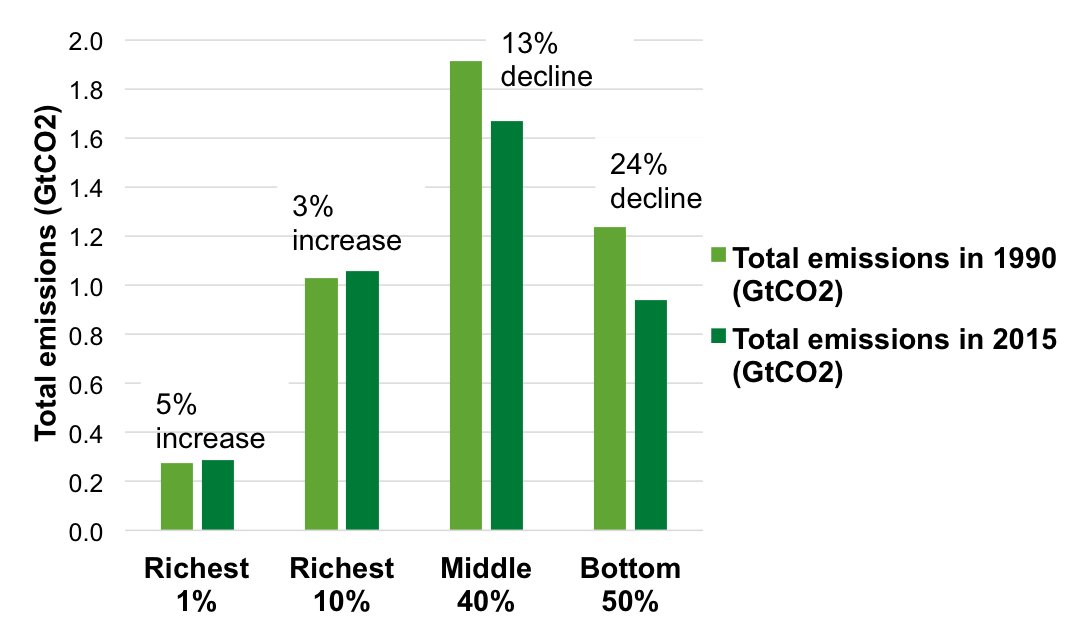
Ahead of tomorrow's release of new @IEEP_eu @Oxfam @SEIclimate estimates of #carboninequality in 2030, based on the #NDCs...
...Here's a reminder of our work last year, as featured in the @UNEP #emissionsgap rpt 2020 🧵
#COP26 #COP26Glasgow
...Here's a reminder of our work last year, as featured in the @UNEP #emissionsgap rpt 2020 🧵
#COP26 #COP26Glasgow
https://twitter.com/GretaThunberg/status/1336933027180666880?s=20
From 1990-2015, global cumulative emissions roughly doubled. Over half of these emissions (52%) were driven by the consumption of the richest 10% of people, using up 1/3 of the remaining carbon budget for 1.5C. The richest 1% drove twice as much as the poorest 50% combined... 

From 1990-2015, annual emissions grew 60%. The richest 5% of people drove over a third of this total growth. When we plot share of total emissions growth by ventiles of the world population, the curve looks like a dinosaur. Emissions barely grew among the poorest 50%... 

We called for COVID-19 recovery funds to tackle inequality & climate together. We showed that per capita emissions of the richest 10% must be 10 times lower than in 2015 by 2030 to get on track to limiting heating to 1.5C, which would cut global annual emissions by a third... 

We found about 1/2 the emissions of the richest 10% in 2015 came from citizens in N America & Europe, and about a 1/5 from citizens in China & India. We said the geographic composition is changing fast... 

And we pointed to bottom-up studies that help show the sources of emissions from consumption of the richest ... transport being the biggest contributor - the most unequal form of carbon consumption 

Stats were cited in Ch 6 2020 @UNEP #emissionsgap rt, by @antonioguterres, @GretaThunberg & others
They capture what we all know intuitively - #climatecrisis is fundamentally a crisis of #inequality - driven by the 'haves', harming worst the 'have nots'
ted.com/talks/antonio_…
They capture what we all know intuitively - #climatecrisis is fundamentally a crisis of #inequality - driven by the 'haves', harming worst the 'have nots'
ted.com/talks/antonio_…
Tomorrow's follow-up rpt estimates what the #NDCs mean for the per capita consumption emissions of global income groups in 2030
It shows the #inequality behind the #emissionsgap - whose consumption is set to drive 1.5C out of reach, without further action?
#COP26 #COP26Glasgow
It shows the #inequality behind the #emissionsgap - whose consumption is set to drive 1.5C out of reach, without further action?
#COP26 #COP26Glasgow
.@fionaharvey @KarlMathiesen @climatemegan @meganrowling @KiraTaylor15 @GeorgeMonbiot @GretaThunberg @StuartBCapstick @KevinClimate @lucas_chancel @jasonhickel @edking_I @vanessa_vash @SelwinHart @lewisakenji @KateRaworth @JKSteinberger @yl_oswald @farhanaclimate @chilledasad100
And here's the thread with findings from the new paper out today
https://twitter.com/tim_e_gore/status/1456543965650558979?s=20
• • •
Missing some Tweet in this thread? You can try to
force a refresh



